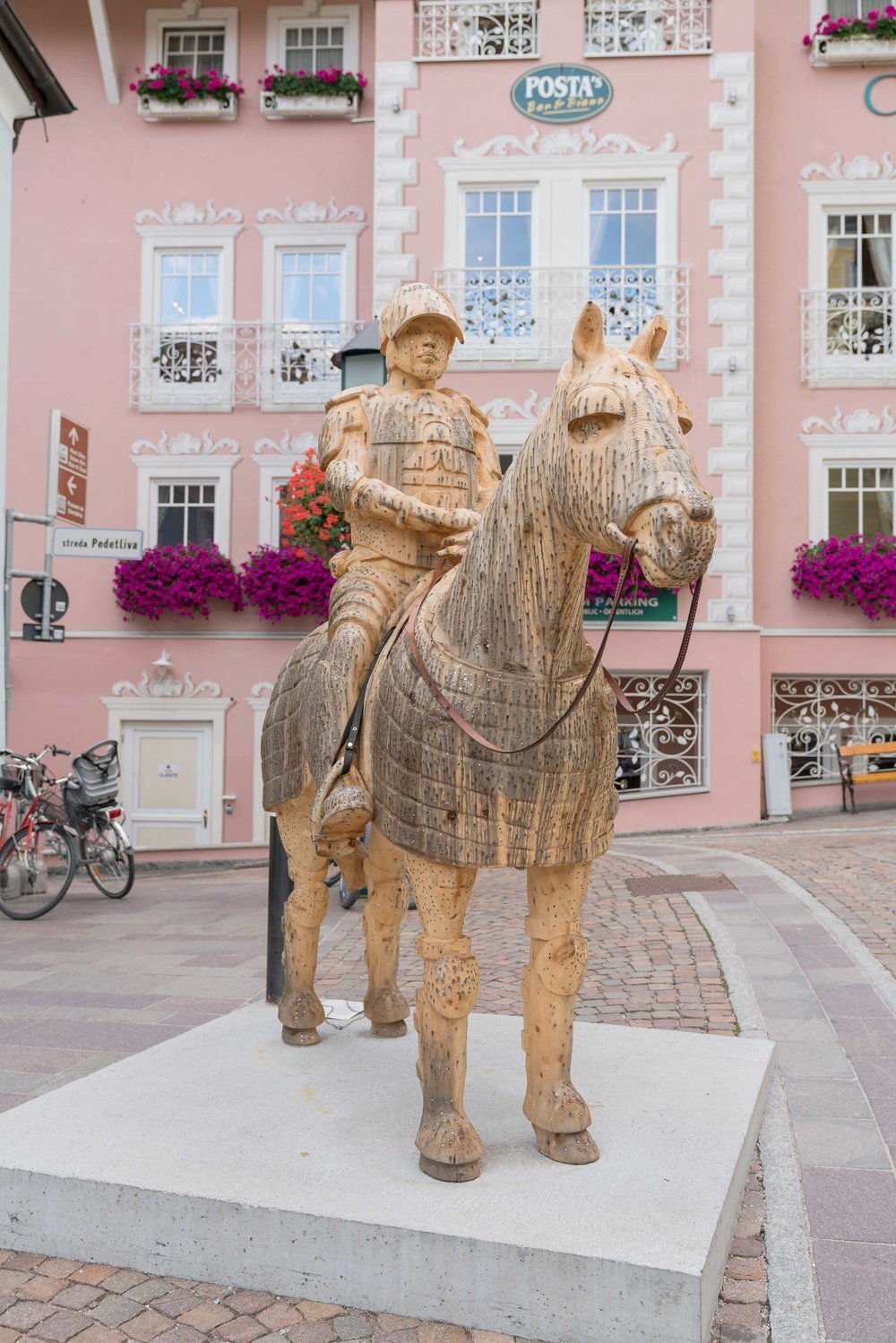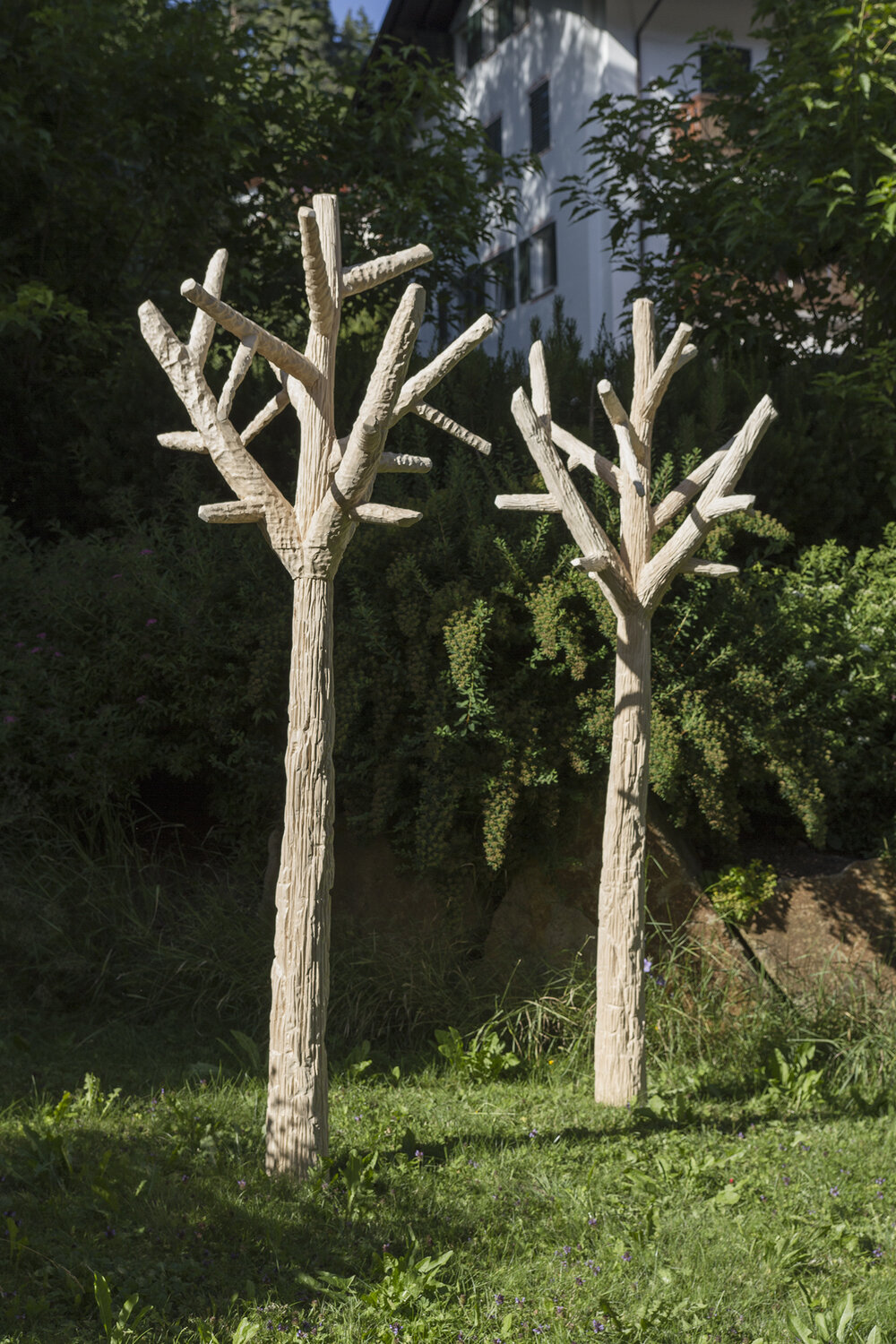





5th Biennale Gherdëina
FROM HERE TO ETERNITY
22.07. –
11.09.2016
curated by Adam Budak
Concept
FROM HERE TO ETERNITY (THAT’S WHERE SHE TAKES ME) - Without an eternity, without a sensitive, secret mirror of what passes through every soul, universal history is lost time, and along with it our personal history - which rather uncomfortably makes ghosts of us.[1]
Jorge Luis Borges, A History of Eternity, 1936
The eternity – as the Argentine master of labyrinths and mirrors, Jorge Luis Borges explains to us – is the model and archetype of time. It is a game or a spent hope, the writer argues in his non-fiction A History of Eternity, while deconstructing Plato’s time as a moving image of eternity and unfolding Plotinus’s understanding of eternity as a world of universal forms. For Borges, nostalgia is a model of unanimous eternity: ‘The exile who with melting heart remembers his expectations of happiness sees them sub specie aeternitatis [under the aspect of eternity], completely forgetting that the achievement of one of them would exclude or postpone all the others. In passion, memory inclines towards the intemporal. We gather up all the delights of a given past in a single image; the diversely red sunsets I watch every evening will in memory be a single sunset. The same is true of foresight: nothing prevents the most incompatible hopes from peacefully coexisting. To put it differently: eternity is the style of desire. (The particular enjoyment that enumeration yields may plausibly reside in its insinuation of the eternal - the immediata et lucida fruitio rerum infinitarum.)’[2] According to Susan Stewart, the author of On Longing,[3] The location of desire, or, more particularly, the direction of force in the desiring narrative, is always a future-past, a deferment of experience in the direction of origin and thus eschaton, the point where narrative begins\ends, with engendering and transcending the relation between materiality and meaning.
Adam Budak was born in Poland in 1966. He studied Theatre Studies and Philosophy in Krakow (Poland) as well as Art History in Prague (Czech Republic) and Colchester (England). In addition to his work as a guest lecturer at the Art Academy in Ghent (Belgium) and at the Jagiellonian University in Krakow, Budak worked as a curator at various international art houses: from 1998 to 2003 at the exhibition house Bunkier Sztuki in Krakow, from 2003 to 2011 at the Kunsthaus Graz, from 2012 to 2013 at the Hirshhorn Museum and Sculpture Garden in Washington D.C. (USA), from 2014 to 2020 as Artistic dirctor of the National Gallery in Prague and since 2020 as Artistic Director of the Kestner Gesellschfaft in Hannover, Germany.
Curator
Artists
Venues
Doris Ghetta – Director•Igor Comploi – Deputy director / Production manager•Beatrix Insam – Administration and organisation•Eva von Ingram Harpf – Projectmanager•Willi Crepaz – Productions•Victoria Dejaco – Curatorial Department•Dall’O & friends – Graphic studio•Simon Perathoner – Photographer



